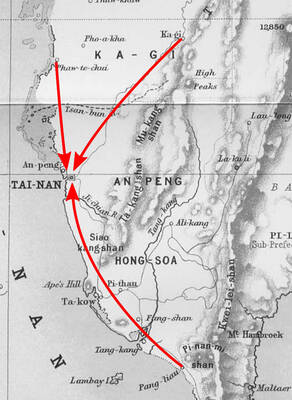Dalai Lama Renaissancecould very easily be one of these depressingly worthy films in which the great and the good expatiate on their grand ideas about what’s wrong with the world. That’s how it seems to start out, then almost magically, it turns into something rather different.
Harrison Ford’s solemn introduction about “40 of the world’s most innovative thinkers meeting with the Dalai Lama to solve many of the world’s problems” had me checking the location of the emergency exits. Harrison Ford is not a natural narrator, and his introduction to the film in solemn, earnest tones is off-putting. He seems to be announcing: “This is a serious film.”
Get beyond this, and beyond some of the rather sententious statements of the “innovative thinkers” as they gather at Dharamsala, and the film rapidly grabs hold of you. It does so by not being about the world’s problems at all, but about individuals and about the many illusions they have about themselves and about each other.
The people who have been invited are mostly highly articulate and often very thoughtful, many of them holding positions at the top of their various professions, albeit mostly with New Age leanings. They include people like Fred Alan Wolf, a theoretical physicist; Vicki Robin, co-author of Your Money or Your Life; Harry Morgan Moses, a motivational corporate trainer; and Thomas Forsthoefel, an associate professor of religious studies. They are all in Dharamsala to interact, to find ways to share their insights and develop a plan to save the world. At least that is what they think.
The personality of the Dalai Lama is a constant presence in the film, though he leaves the intellectuals to do most of the talking. Insisting that he is nothing but a “simple monk,” he manages to bring them down to earth with a thump whenever their ideas fly off into the stratosphere. There is plenty of humor, all the more revealing for its being unintentional on the part of the conference participants. As some of them recognize, for all their intellectual attainments, they are egotistical and self-absorbed people who want to lead, who want to be the ones who put forward the plan.
The earnestness of this New Age conference is the source of plentiful humor, and director Khashyar Darvich is not inclined to be over-deferential. Arguments erupt over who gets to talk and when. The problems Fred Wolf and fellow theoretical physicist Amit Goswami have in setting up terms for a discussion (they never succeed) is top-notch comedy, and when the Dalai Lama puts the kibosh on various political and economic means of solving the “Tibet problem,” he leaves his proactive do-gooder congregation momentarily flummoxed.
Rather than solving the world’s problems, these leading intellectuals find themselves embarked on a journey of self-discovery, the Dalai Lama a jesting pilot at the helm. In relation to the Tibet issue, the Dalai Lama’s attitude forces a number of them to realize that they need to resolve their own personal Tibets before they can sally forth in aid of the Dalai Lama’s. In a sense, they are very nicely told where they get off, and with the blessing of the Dalai Lama, they should go home and think about things more clearly.
Many people who view this film will share many of the assumption of the predominantly Western conference participants. To solve a problem, you form a plan and then you implement it. The Dalai Lama suggests that nothing is that simple. It is amusing to see the group of high-powered thinkers put in their place, but the lessons of Dalai Lama Renaissance apply just as much to the audience watching this insightful documentary.

The Taipei Times last week reported that the rising share of seniors in the population is reshaping the nation’s housing markets. According to data from the Ministry of the Interior, about 850,000 residences were occupied by elderly people in the first quarter, including 655,000 that housed only one resident. H&B Realty chief researcher Jessica Hsu (徐佳馨), quoted in the article, said that there is rising demand for elderly-friendly housing, including units with elevators, barrier-free layouts and proximity to healthcare services. Hsu and others cited in the article highlighted the changing family residential dynamics, as children no longer live with parents,

It is jarring how differently Taiwan’s politics is portrayed in the international press compared to the local Chinese-language press. Viewed from abroad, Taiwan is seen as a geopolitical hotspot, or “The Most Dangerous Place on Earth,” as the Economist once blazoned across their cover. Meanwhile, tasked with facing down those existential threats, Taiwan’s leaders are dying their hair pink. These include former president Tsai Ing-wen (蔡英文), Vice President Hsiao Bi-khim (蕭美琴) and Kaohsiung Mayor Chen Chi-mai (陳其邁), among others. They are demonstrating what big fans they are of South Korean K-pop sensations Blackpink ahead of their concerts this weekend in Kaohsiung.

Oct 20 to Oct 26 After a day of fighting, the Japanese Army’s Second Division was resting when a curious delegation of two Scotsmen and 19 Taiwanese approached their camp. It was Oct. 20, 1895, and the troops had reached Taiye Village (太爺庄) in today’s Hunei District (湖內), Kaohsiung, just 10km away from their final target of Tainan. Led by Presbyterian missionaries Thomas Barclay and Duncan Ferguson, the group informed the Japanese that resistance leader Liu Yung-fu (劉永福) had fled to China the previous night, leaving his Black Flag Army fighters behind and the city in chaos. On behalf of the

I was 10 when I read an article in the local paper about the Air Guitar World Championships, which take place every year in my home town of Oulu, Finland. My parents had helped out at the very first contest back in 1996 — my mum gave out fliers, my dad sorted the music. Since then, national championships have been held all across the world, with the winners assembling in Oulu every summer. At the time, I asked my parents if I could compete. At first they were hesitant; the event was in a bar, and there would be a lot